7 Best Sit Up Variations (with Pictures!)
The sit-up is a classic core strengthening exercise known for having a particular emphasis on the abdominal muscle group.
Despite controversy relating to its risk of back strain, quite a number of different sit-up variations exist, many of which build upon its inherent benefits.
While there are few substitutes to the traditional sit-up - lifters can take things to the next level by altering the orientation of their body with the raised and decline sit-up.
Similarly, greater isometric or dynamic contraction can be created with the stability ball sit-up and V sit-up, respectively.
What is a Sit-Up?
The sit-up is a core isolation exercise traditionally performed with bodyweight resistance and no equipment whatsoever.
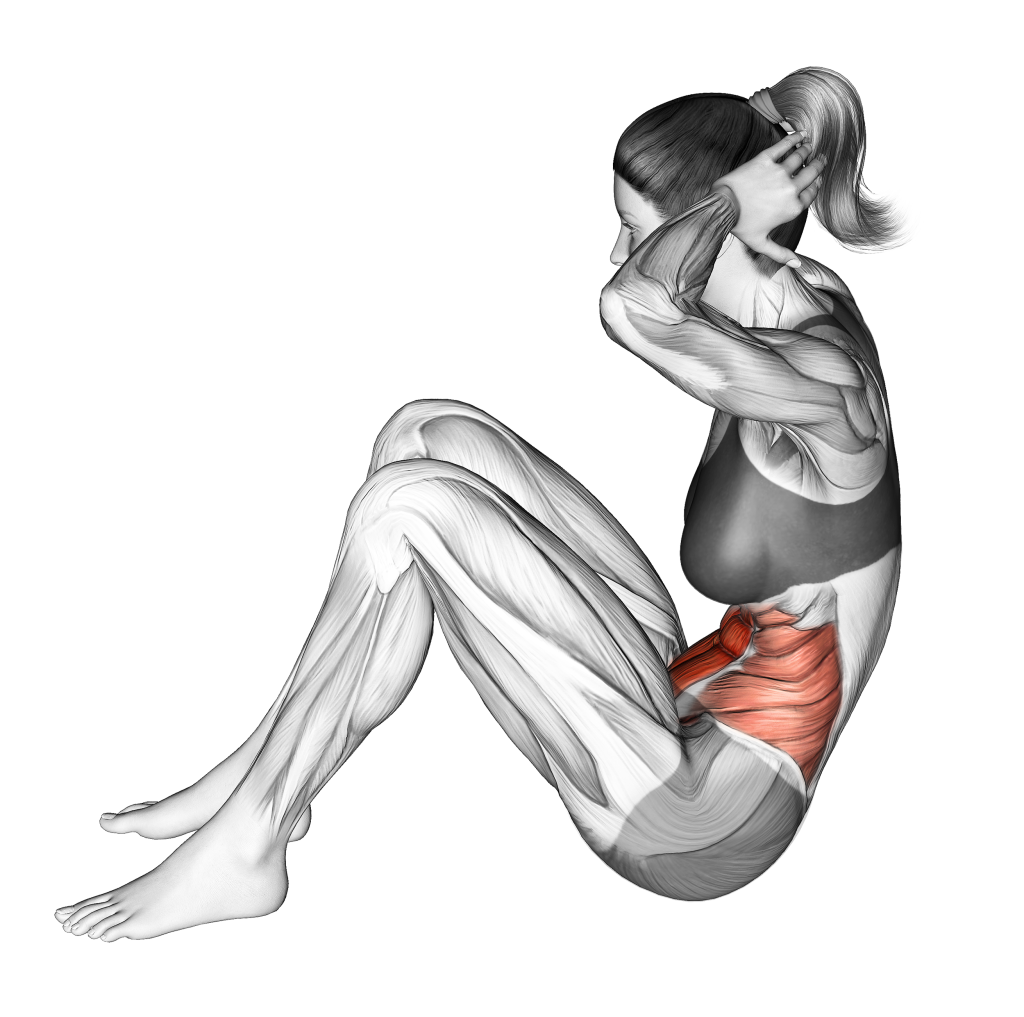
Because of its small recruitment pattern and relatively low resistance, sit-ups are often performed for high volume sets.
In most sit-up variations, the performer will lie on their back with their knees drawn up and curl their torso upwards until it is vertically upright. This is done so as to target the rectus abdominis, internal and external obliques, and the hip flexors.
A Note on Sit-Ups vs Crunches
Some lifters may be confused as to the difference between a sit-up and a crunch - the latter of which is occasionally referred to as a sit-up variation itself.
The sit-up and crunch differ by their range of motion, with the crunch featuring a smaller and more abs-focused movement pattern.
Here's an example of a crunch:
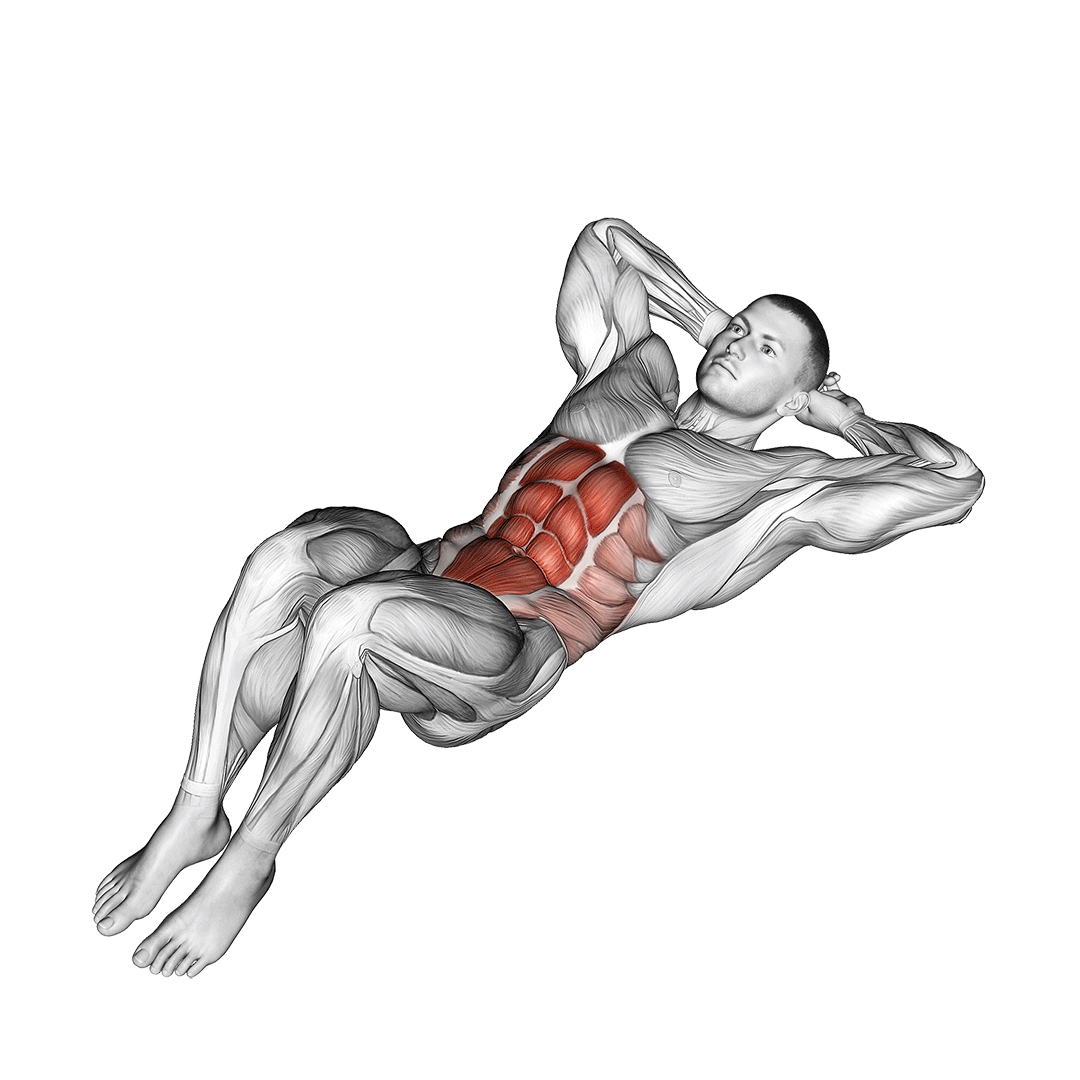
Of course, the crunch is indeed a variation of the sit-up, and considered to be far safer and more effective despite a shorter ROM.
Because of this difference (and the fact that crunches have their own variations), we’ve elected to leave the crunch out of this list for the sake of simplicity.
Sit Up Variations
1. The Conventional Sit-Up
The conventional sit-up is simply the regular sit-up with which most individuals refer to when speaking of a sit-up. It is performed in a lying position and requires the lifter to raise their torso upwards until it is against the thighs.
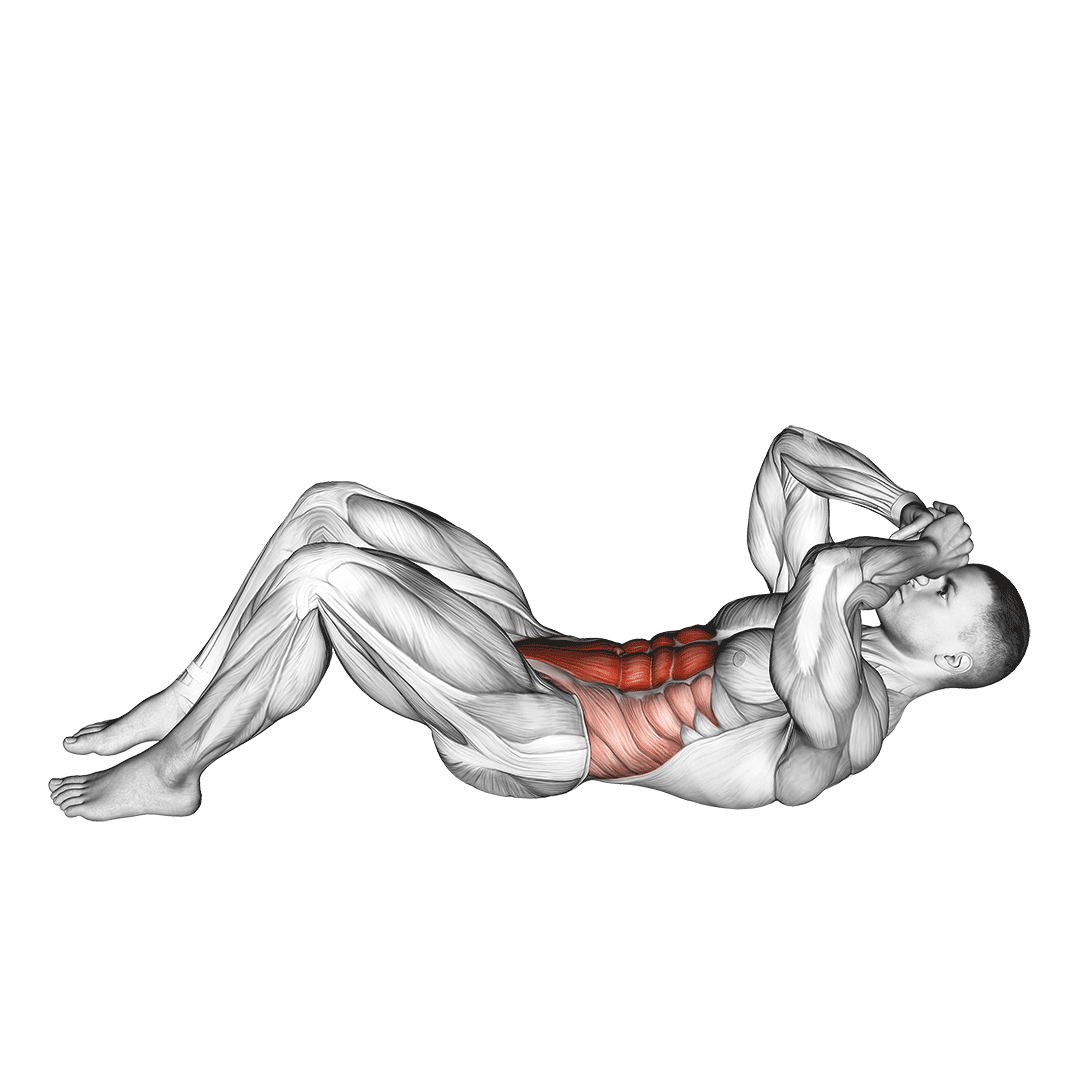
Like most other variations, the traditional sit-up is a core isolation exercise meant to build strength, stability and endurance in the muscles of the abs, obliques and certain sections of the hip muscles.
Sit-ups are occasionally the subject of controversy due to their greater risk of lower back strain when performed incorrectly - especially in comparison to other core isolation movements. So long as proper form is followed (and a soft surface beneath the back), this risk can be mitigated.
Core Muscles Worked
The traditional sit-up targets the rectus abdominis the most, but will also work the rest of the abs to a similar level. The obliques will also play a supporting role alongside the hip flexors.
Benefits as a Sit-Up Variation
Traditional sit-ups are great for building a baseline level of core strength and stability.
With a simple movement pattern, relatively straight-forward form and the capacity for added resistance, sit-ups are the ideal variation for the majority of lifters.
How-to:
In order to perform a repetition of the sit-up, the lifter will lie on their back with their knees drawn up, hands flat on the floor or behind their neck for added stability. The chin should be tucked in and the upper back relaxed so as to avoid spinal tension.
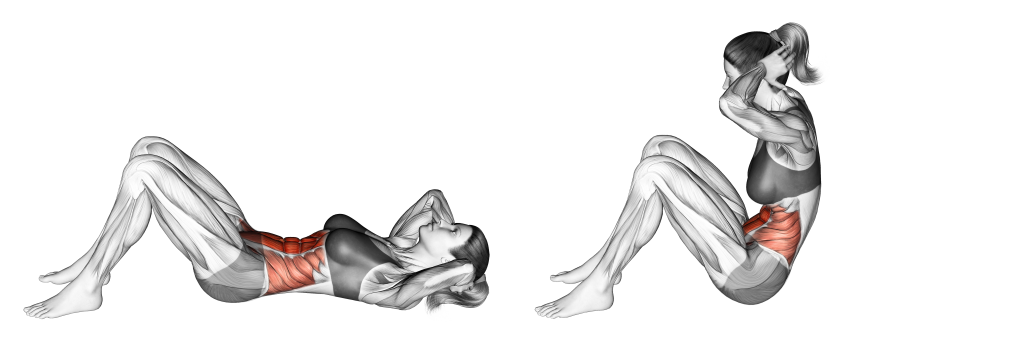
Keeping the heels planted on the ground, the lifter will then contract their core and lift their upper body towards their knees, stopping once they are nearly touching.
From this point, the lifter will slowly return their torso to the ground, completing the repetition.
2. The Raised Sit-Up
The raised sit-up is simply a conventional sit-up variation where the lifter elevates their legs with the use of a bench or box. This greatly increases the level of stability work that the core will need to do, further working the abs and other nearby muscles.
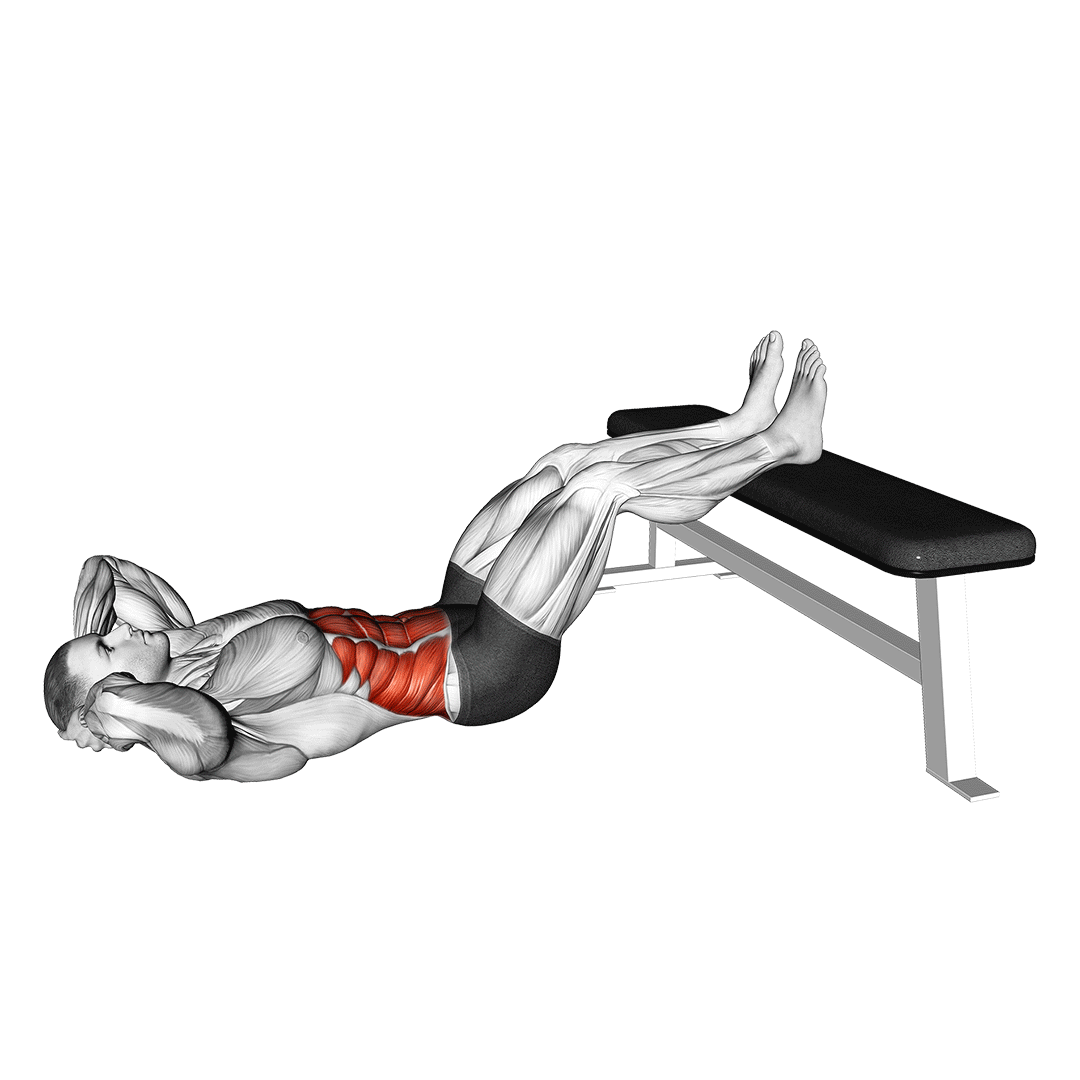
In addition, the raised sit-up also helps reduce the risk of back strain by changing the fulcrum point of the body. In all other aspects, the raised sit-up is much the same as its conventional counterpart.
Core Muscles Worked
Raised sit-ups work much the same muscles as their conventional counterpart, only with greater isometric contraction. In addition, the hip flexors are also worked harder.
Benefits as a Sit-Up Variation
As mentioned previously, raised sit-ups have the benefit of being somewhat safer and more intense than conventional sit-ups.
This is further compounded by the fact that the lifter is less likely to “cheat” the repetition by raising their heels off the ground.
How-to:
To perform a raised sit-up, the lifter will lie on their back with their heels elevated atop a bench or chair. The knees should be bent as they do this, rather than fully extended. Otherwise, the stance remains much the same with the hands supporting the spine and the chin tucked in.

Then, contracting their core, the lifter will raise their torso upwards until it is oriented vertically upright.
Once at this point, the lifter then slowly lowers their body back to the floor, thereby completing the repetition.
3. The Decline Sit-Up
Like the raised sit-up, the decline sit-up is a sit-up variation characterized by altering the orientation of the lifter’s body. In this case, the body is placed at a decline angle so as to widen the range of motion and force the core musculature to work harder.
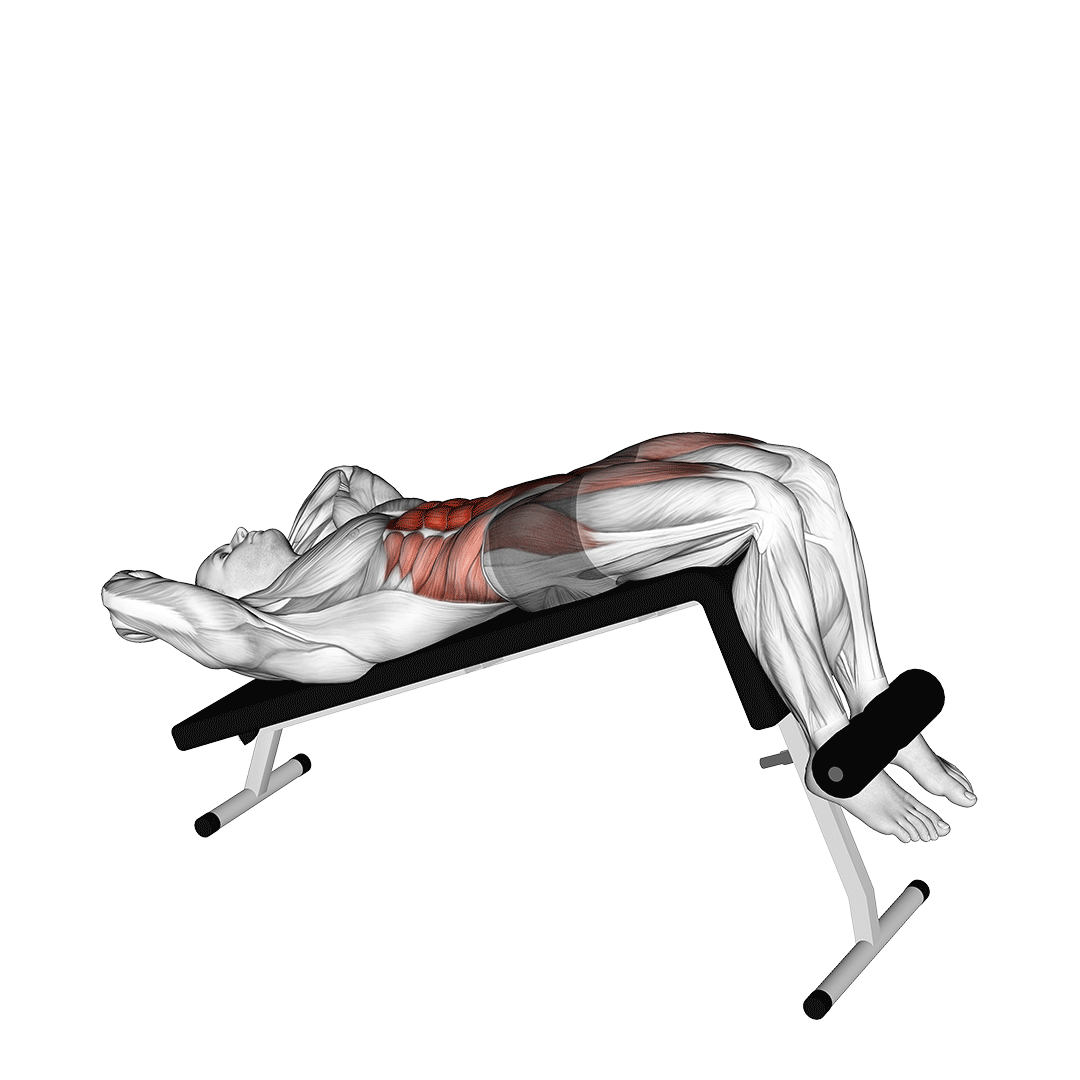
The decline sit-up will require a decline bench and an already-established understanding of proper sit-up form.
Core Muscles Worked
Decline sit-ups target the lower section of the rectus abdominis the most alongside the hip flexors. Of course, the remaining portions of the core will also be worked to a lesser extent.
Benefits as a Sit-Up Variation
The decline sit-up is often preferred for its greater intensity and wider range of motion - both of which create a greater challenge for the abs and other nearby muscles. In addition, with the body set at a decline angle, less strain and discomfort of the lower back will be present.
How-to:
To perform a repetition of decline sit-ups, the lifter will set a decline bench at a 35-45 degree angle, hooking their legs into the pads and lying back.
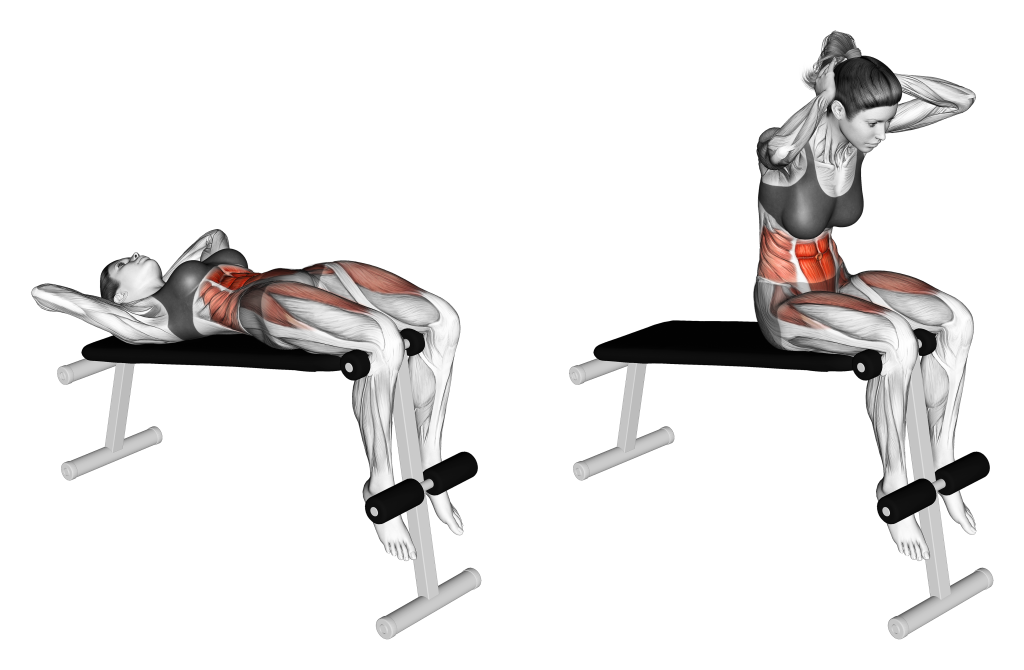
Keeping the hands behind the neck for better support, the lifter then contracts their core and raises themselves upwards, leveraging at the pelvis until the torso is upright and raised off the bench.
From this position, the lifter completes the repetition by slowly lowering themselves back to a lying stance.
4. The Stability Ball Sit-Up
For even greater stability training, one can substitute conventional sit-ups with a variation that makes use of a stability ball.
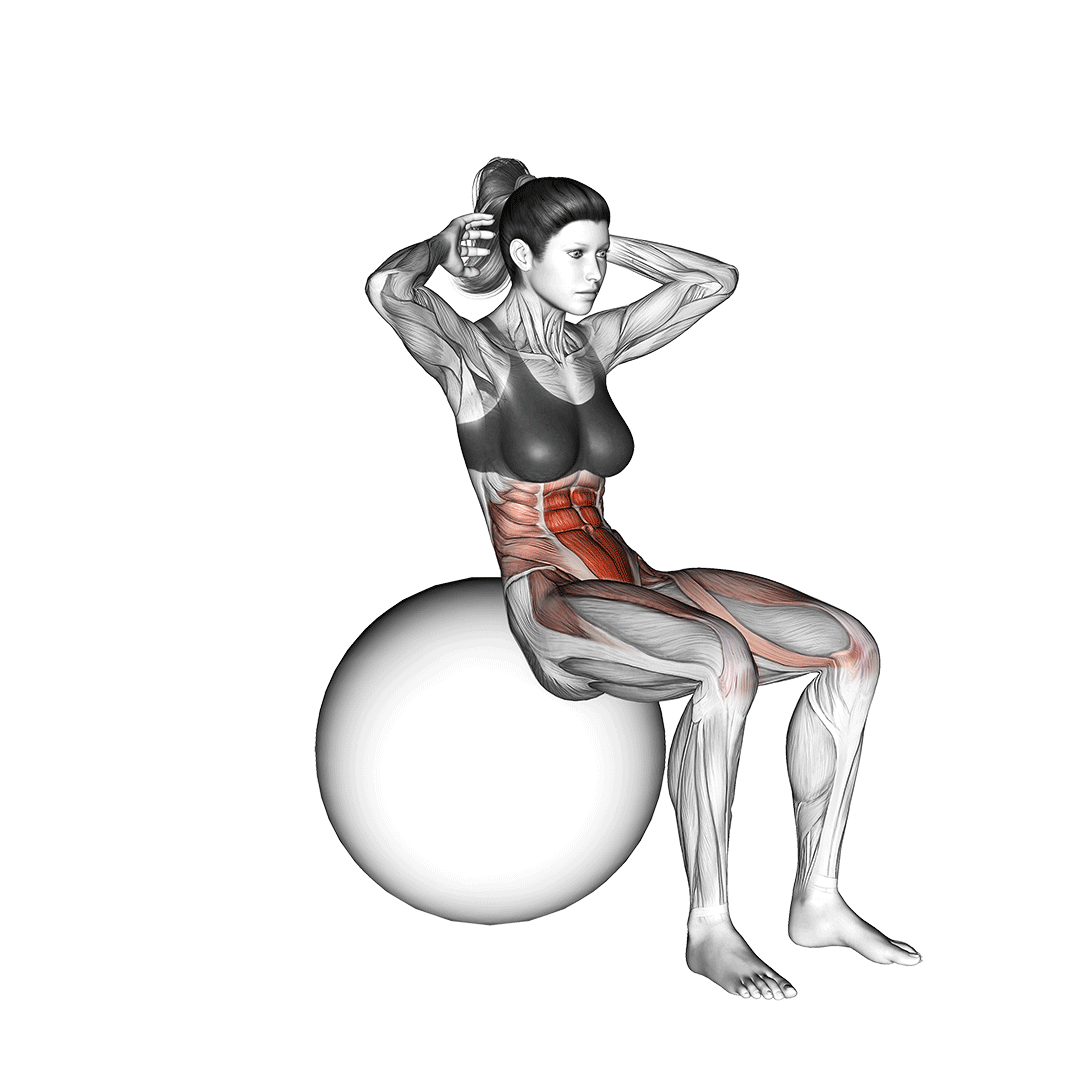
Stability ball push-ups elevate the lifter atop the ball and place their feet at a lower elevation than the torso, reducing the involvement of the hip flexors but bringing a host of other benefits in exchange.
Core Muscles Worked
The stability ball works the same muscles as any other sit-up variation, but without as much hip flexor recruitment. This means the abs and obliques are all worked in a full range of motion.
Benefits as a Sit-Up Variation
Apart from being great for increased isometric contraction of the core, the stability ball will also deform to the shape of the lifter’s back. This effectively eliminates much of the risk of lower back strain, and can be a viable alternative for lifters who find conventional sit-ups uncomfortable.
How-to:
Performing a stability ball sit-up is quite similar to performing a conventional sit-up, only with a somewhat elevated stance.
To do so, the lifter will lie atop the stability ball, ensuring that their glutes and lower back are pressed against it and the feet are flat on the floor beneath them.
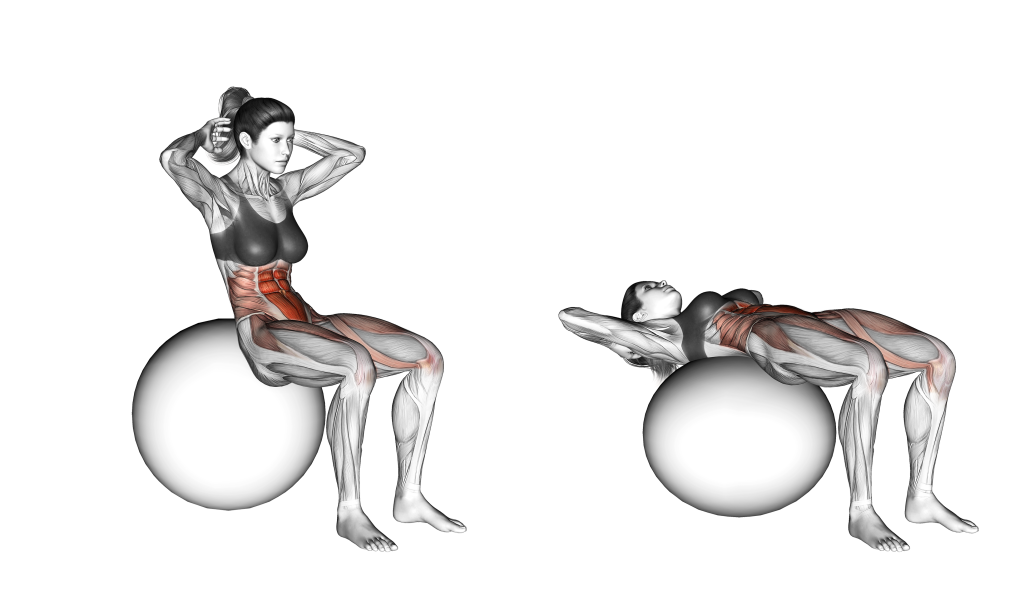
Each repetition should begin with the chest and head at least parallel with the pelvis.
From this position, the lifter will simply contract their core and raise their upper back off the ball, continuing with the motion until they are effectively sitting upright atop the ball.
Once the torso is oriented vertically, the lifter will slowly lower it back to a parallel point with the hips - thereby completing the repetition.
5. The V Sit-Up/V-Sit
Also occasionally called V-ups, the V sit-up is akin to a frog crunch where both the torso and the legs are raised simultaneously so as to target the core from both sides.
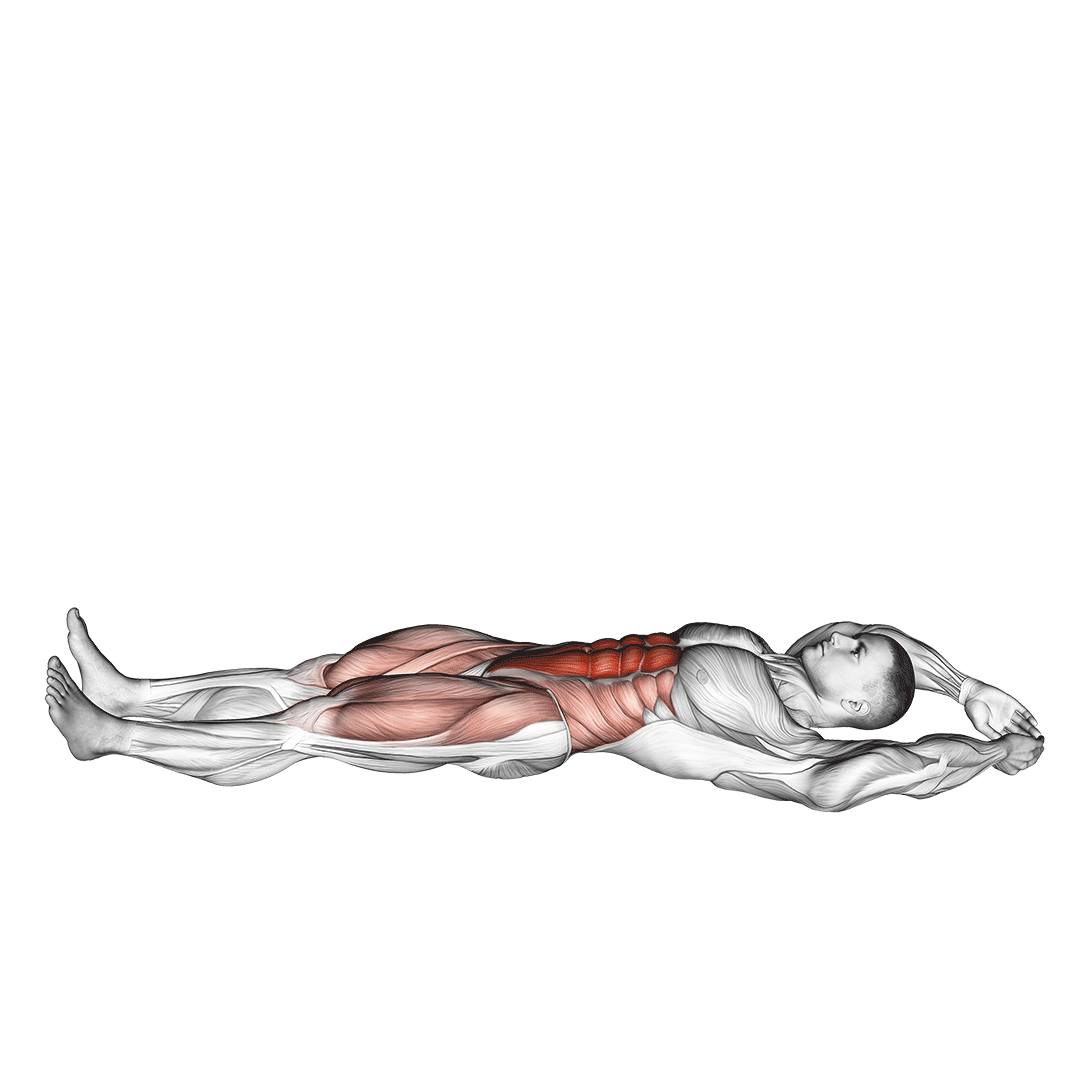
Unlike other exercises with a similar movement pattern, the V-sit keeps the legs fully extended throughout the repetition, maximizing recruitment of the lower section of the core and the hip flexors.
V sit-ups are an advanced variation that require an established level of core strength and familiarity with conventional sit-up form.
High level calisthenics athletes can even transform the exercise into a planche modification for greater intensity.
Core Muscles Worked
V sit-ups maximize recruitment of the rectus abdominis in its entirety - this is alongside targeting the rest of the core in a somewhat lesser capacity.
In addition, in comparison to other sit-up variations, the V sit-up is quite effective at recruiting the hip flexors.
Benefits as a Sit-Up Variation
V sit-ups are excellent for lifters who find that they have an upper/lower imbalance of the abdominal muscles, something that can become quite common when regular sit-ups and crunches are overused.
Furthermore, the V sit-up can also be considered a progression from easier sit-up variations, as it is considerably more challenging in both technicality and the gross core strength required.
How-to:
To perform a repetition of the V sit-up, the lifter will lay on their back with their arms extended besides the head. The chin should be tucked in and the legs extended throughout the set.

Beginning the repetition, the lifter will simultaneously raise their upper body and legs off the floor, contracting their core as they do so. They will continue with this motion until the legs and upper body form a “V” shape, keeping the core braced and the legs straight throughout.
To complete the repetition, the lifter simply lowers their arms and torso back to a lying position.
6. The Elbow to Knee Sit-Up
Elbow to knee sit-ups are an oblique-focused sit-up variation that have the lifter twist their torso as they raise it off the floor, pointing the elbow at their bent knees as they do so.
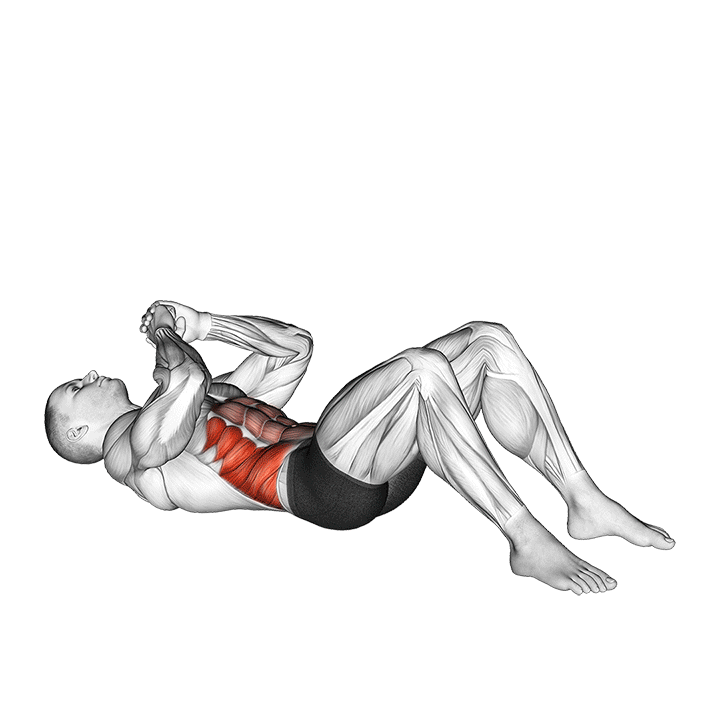
Elbow to knee sit-ups are one of the few sit-up variations that prioritize the obliques over the abdominal muscles. When programming a core workout, it may be beneficial to include them alongside more conventional abdominal exercises for more comprehensive core training.
As a side note - this particular variation is inherently unbalanced, and it is important to ensure that both sides of the obliques are being trained with equal volume.
Core Muscles Worked
As touched upon in the previous section, the elbow to knee sit-up is used to target both the internal and external obliques. This is in addition to the abdominal muscles and the hip flexors.
Benefits as a Sit-Up Variation
Poor oblique strength and stability is a common problem among lifters, as few exercises directly isolate them. The elbow to knee sit-up is the perfect exercise for such cases.
How-to:
To perform a repetition of elbow to knee sit-ups, the lifter will lie supine with their knees drawn up and their hands either behind the neck or atop their chest.

Now in the correct stance, the lifter will squeeze their core and raise their upper back off the floor. As they do so, they will twist their torso, leading with one elbow and pointing it at the knee of the opposite leg.
Once the elbow is touching the opposite knee, the lifter will reverse the motion and lower themselves back to the floor. At this point, the repetition is complete. Don’t forget to repeat with the other side.
7. The Butterfly Sit-Up
Butterfly sit-ups are an intermediate variation of sit-up where the lifter’s feet are pressed together so as to widen the range of motion and eliminate involvement of the hip flexor muscles.
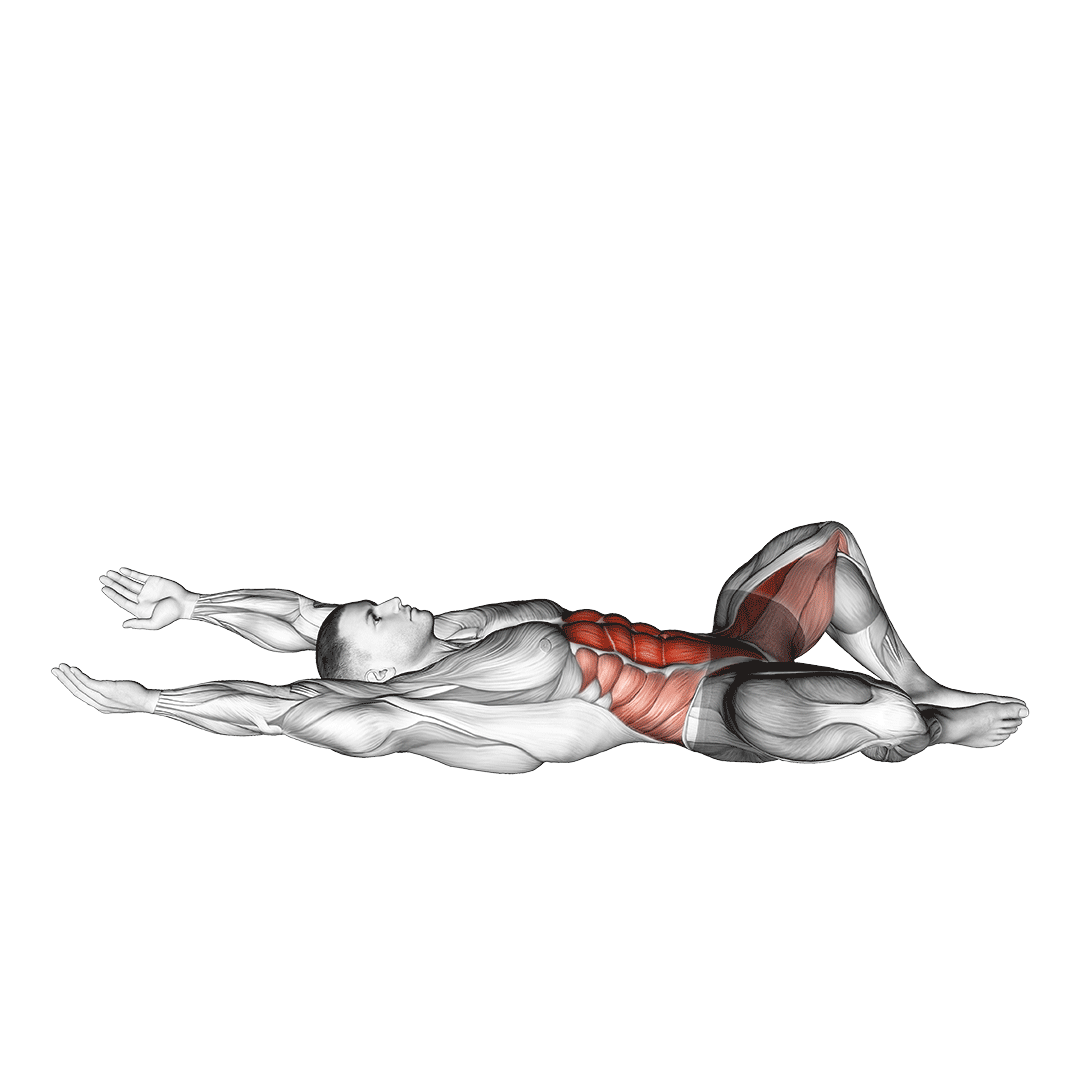
Apart from the legs forming a diamond shape due to the position of the feet, the butterfly sit-up is otherwise identical and involves much the same movement pattern as a conventional sit-up.
Core Muscles Worked
Butterfly sit-ups will target the rectus abdominis and other core muscles to a greater degree than is seen with regular sit-ups.
However, unlike most other variants, the butterfly sit-up does not involve the hip flexors.
Benefits as a Sit-Up Variation
With a wider range of motion and more isolated core contraction, the butterfly sit-up is perfect for maximizing development of the core musculature without being limited by the fatigue of other muscles.
How-to:
To perform butterfly sit-ups, the lifter will simply lie on their back with the soles of their feet pressed together, bending the legs out to the sides so as to form a diamond shape with them.

From this stance, the sit-up proceeds as normal, with the lifter contracting their core and raising their torso off the ground until it is upright. Without the knees in the way, the lifter can draw their torso further forwards, boosting abdominal muscle recruitment.
Once the torso is upright and vertical, the lifter slowly returns to a lying stance in order to complete the rep.
Which Sit-Up Variation is the Best?
With the sheer number of sit-up variations out there, deciding on a single one can be challenging.
Although there is no overall best kind of sit-up, the majority of coaches advise performing any abs exercise other than the conventional sit-up. This is due to its somewhat greater risk of injury in comparison to crunches or other sit-up variants.
Unless you have specific training goals to fulfill, we suggest trying out the decline sit-up or the stability ball sit-up - both of which do not suffer from the same disadvantages as their conventional version.
References
1. Sharma, Kalpana. Hussain, Ikram. (Jan. 10, 2008.) “Electromyographic Comparison of Abdominal Muscle Activation during Sit-Up Exercise and Ab Crunch” International Journal of Sports Science and Engineering. Vol. 02 (2008) No. 01, pp. 52-56 ISSN: 1750-9823
2. Contreras, Bret. Bodyweight Strength Training Anatomy. United States: Human Kinetics, 2013. ISBN: 9781492581772, 1492581771
